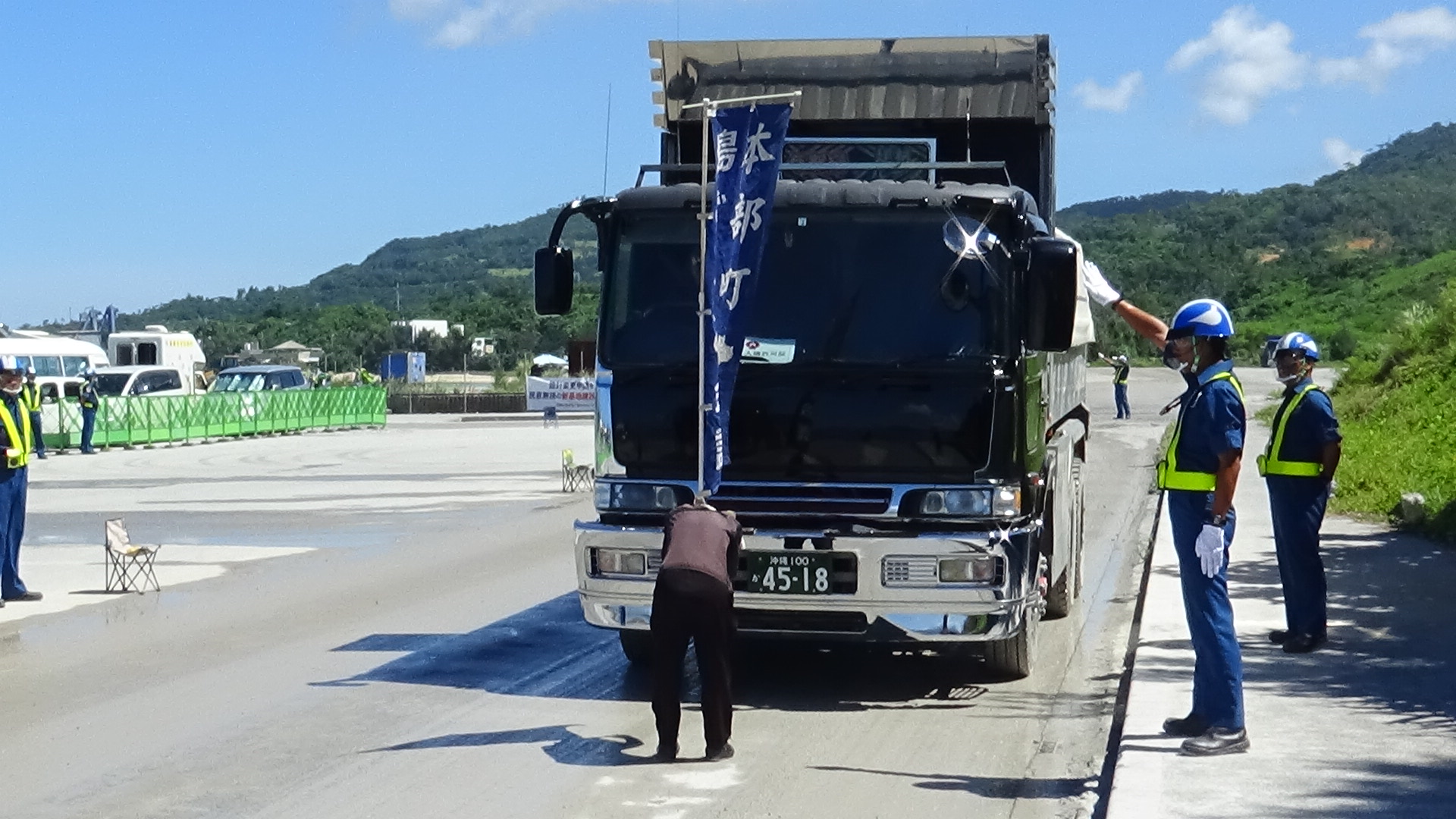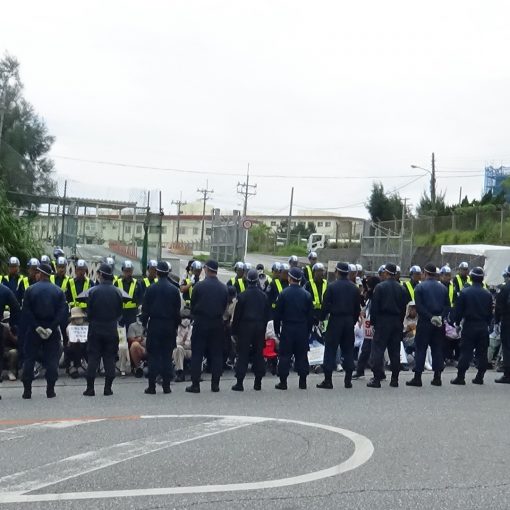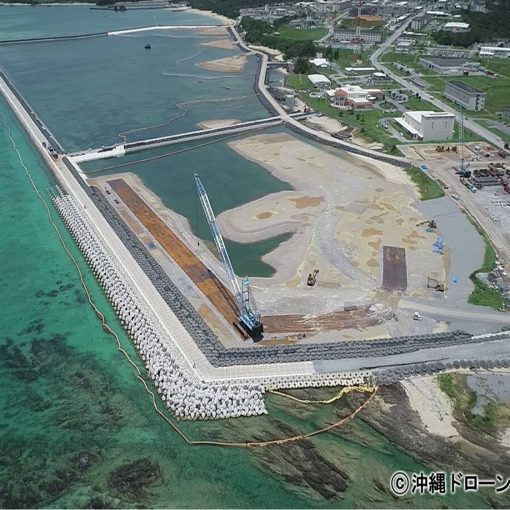He is one of the divers who know the Oura Bay the most. “The sea around here is wonderful,” says he repeatedly. At the same time, however, he feels that roads and a new military base are destroying the sea.
How was the Oura Bay in old times? He lets his imagination run, having dived in similar coral-covered seas in Micronesia, Palau, and Guam, etc. He says that his image is taking solid shape recently. “The Oura Bay must have been incredibly beautiful. The reefs here are the kinds of those which is still comparable to the Great Barrier Reef. Okinawans must know more about the corals in Okinawa.”
Osamu Makishi (70 years of age) is leading a diving team “Rainbow” formed five years ago. Once or twice every week, he dives and conducts a fixed-point observation of the deteriorating seabed affected by the new base construction.
He gets distressed and bites down on his lip with fury every time he sees with his own eyes the reefs crushed by big concrete blocks, coral bleaching, and the seabed covered with red soil.
The Nagashima beach where his canoe team used to take a rest had disappeared. The number of gulls, migratory birds, flying in a flock of hundreds in the days past, has been rapidly decreased. “The seawall construction has dramatically changed the flow of tides and taken away the sand. We used to have lunch leisurely here. Many gulls were also resting,” he says.
He also criticized the Okinawa Defense Bureau for its coral transplanting plan. “They claim to transplant 38,000 colonies, but only the ones taller than 1 meter high. The little ones may grow taller than 1 meter next year. Transplanting is impossible. Most of them will die,” he says. One of his friends deeply empathized, “the corals are crying.”
“I will leave diving to younger members. They have learned a lot and can manage without me.” Is he getting unassertive at 70 years of age? His eyes, however, show no sign of decline.

(In front of Camp Schwab Gate)
It is “the hottest day” per the moon calendar originated in China and still used in some Asian countries, e.g., South Korea and Japan. The citizens staged a sit-in, bearing the direct scorching sunlight. Grandma Fumiko, the eldest woman here (94 years of age), took up her place with her wheelchair. Mainly women who came from Naha sang songs, and the protestors chanted slogans to the base. They persisted in sitting, acting deaf, and countering against the riot police who urged them to move. A total of 235 heavy vehicles delivered the materials three times from the morning through the afternoon.


(Ryukyu Cement Awa Pier)
About 20 members of Uruma City Shimagurumi divided into the pier’s entrance and exit and continued the protest against the dump truck drivers. Six GoGo Drive members also drove around the national road.The drivers tried to make as much delivery as possible to make up for the four-day national holidays that start tomorrow. The dump trucks came continuously.
A total of 798 dump trucks delivered soil/sand from the quarry, and soil/sand for 875 vehicles was loaded to four carriers.
The sea team also rode out for protest in two rubber boats and nine canoes, delaying the carrier’s departure by more than one hour.


(Motobu Shiokawa Pier)
The loading operation started at 9:50 a.m. Because no additional empty carriers were available, loading to one carrier at a time was made.Six members of Motobu Shimagurumi continued rallying. The citizens, in the heat, kept standing without a rest. A total of 210 truckloads of soil/sand were loaded to two carriers.


Number of dump trucks to date and percentage against the total
The estimation calculated on the basis of the number of ruckloads serves only as a reference.
Number of dump trucks which made delivery from December 2018 to the end of December 2019 114,601(1.39%)
| 18(Sat) | 20(Mon) | 21(Tue) | 22(Wed) | 23(Thr) | 24(Fri) | |
| Awa | 508 | 595 | 860 | 875 | ||
| Shiokawa | 0 | 493 | 211 | 210 |
| Number of dump trucks ※ |
Weightt of earth/sand
※① |
Converted to volume
※② |
Volume per Total
※③ |
| 211,381 | 1,056,905t | 528,453㎥ | 2.616% |
※ Cumulative since Dec. 1, 2019
※① Calculated by assuming that the average truckload per dump truck would be 5 tons
※② Calculated by assuming that a specific weight of soil/sand set to be 2
※③ Percentage against 20.200.000m3, the total volume of earth and sand required for the landfill.





.bmp)